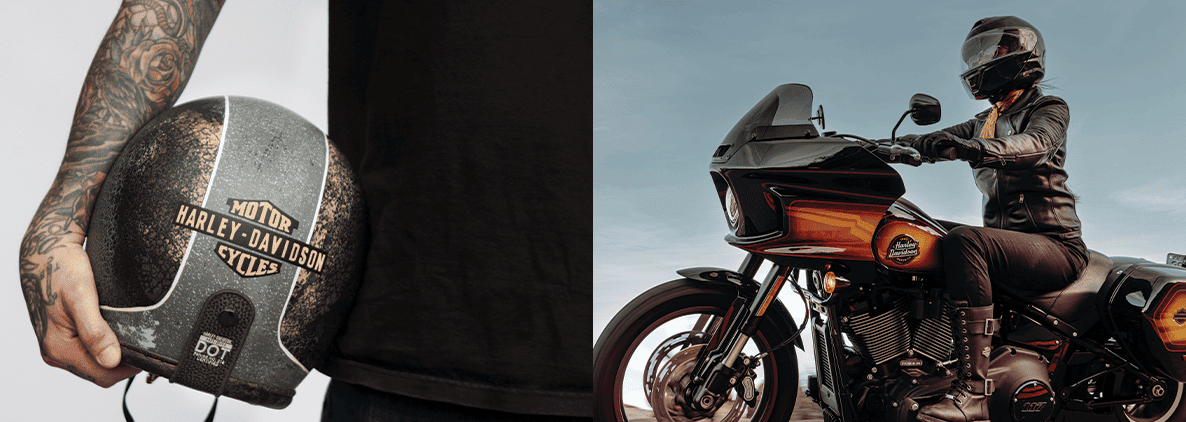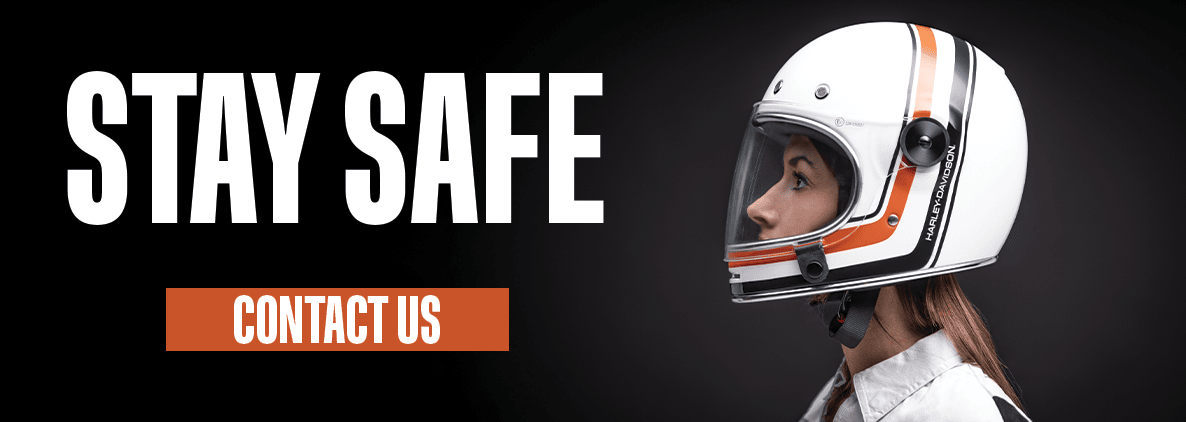How Often Should You Change Your Motorcycle Helmet?
Your Motorcycle Helmet: Knowing When To Replace It
For motorcycle riders, a helmet is more than just headwear, it's a crucial piece of safety equipment. In the unfortunate event of an accident, a properly fitted helmet can significantly reduce the risk of head injury or death. However, like any safety gear, a motorcycle helmet's effectiveness diminishes over time. Understanding how often to replace a motorcycle helmet is vital for ensuring your continued protection on the road. Get in touch with the dealers at Rommel Harley-Davidson® Del Marva for the best practices to keep your helmet in top shape, and how often to replace a motorcycle helmet for as long as you're riding!

How Long Are Motorcycle Helmets Good For?
Several factors contribute to a motorcycle helmet's lifespan, making it difficult to pinpoint a single, definitive replacement schedule. So how often should you replace a motorcycle helmet? On average, helmet manufacturers recommend replacing your helmet every five years from the date of manufacture. However, those who are avid riders that could cover up to 20,000 miles a year or more should seek to change their helmets every two to three years. Below are some key considerations to the question of how long a motorcycle helmet lasts. These are helpful tips to keep in mind, but you can always contact our staff at Rommel Harley-Davidson® Del Marva to learn more about how often you should replace your motorcycle helmet.
- Age: Not everything that has some years to it is necessarily better. When it comes to your helmet, you don't want to take a chance on safety. Five years is the ideal time to upgrade your helmet as it accounts for the natural breakdown of materials like glues, resins, and the EPS foam used in the helmet's construction. These materials degrade over time, potentially compromising the helmet's ability to absorb impact energy effectively.
- Frequency of Use: The more frequently you use your helmet, the faster it'll wear out. Regular riders are subject to their helmets showing signs of wear and tear, like cracks, broken straps, and scratches. In cases like this, a helmet is likely to need replacing sooner than one used for occasional weekend rides.
- Exposure to Elements: Extreme temperatures of hot and cold can weaken the helmet's sturdy outer shell, and even its expanded polystyrene liner, which is designed to absorb shock during an impact. Frequent exposure to sunlight, wind, and rain accelerates the degradation process. Additionally, harsh chemicals like cleaning products not specifically designed for helmets can damage the materials. Proper storage in a cool, dry place away from direct sunlight is essential to maximize your helmet's lifespan.
- Accidents and Drops: Even a minor accident or drop can compromise the structural integrity of your helmet, which increases the frequency of how often to replace your motorcycle helmet. Internal cracks or damage to the liner may not be readily visible, but they can significantly reduce the helmet's protective capabilities. If your helmet has been involved in any sort of accident, it's crucial to replace it immediately.

How To Tell If A Motorcycle Helmet Is Still Good
While manufacturer recommendations provide a general guideline, there are specific signs that indicate your helmet may need immediate replacement, regardless of its age. Like car oil that should be changed every 3,000 miles, if it's used frequently, you're better off getting it replaced when its color isn't looking the best and it starts to impact your ride. Likewise, instead of waiting for the optimal five years on how often to replace your motorcycle helmet, you're better off simply replacing it when it starts to deteriorate to avoid the guesswork on the road.
- Loose or Worn EPS Liner: The helmet's crushable foam liner is designed to snugly fit your head and absorb impact energy. Over time, it can compress and lose its ability to provide a secure fit. If you feel excessive movement within the helmet or the padding feels noticeably thinner, it's time for a new one.
- Sticky or Brittle Shell: The helmet's shell should be smooth and slightly flexible. If it feels sticky or brittle, it's a clear sign that the materials have degraded and the helmet may not offer adequate protection in a crash. How often you should replace your motorcycle helmet becomes irrelevant at that point; the time has come.
- Difficulty Operating Visor: The visor mechanism should operate smoothly and securely. If the visor becomes difficult to open or close, or if the seals around the visor have become brittle and no longer provide a good seal, it's a safety hazard and warrants replacement of the helmet or the visor itself. That's definitely not a good time to question how often to replace your motorcycle helmet.
- Presence of Scratches or Cracks: Deep scratches on the visor can compromise its ability to protect your eyes from debris. Similarly, any cracks on the shell, even minor ones, significantly weaken the helmet's structural integrity and require immediate replacement.
Don't Gamble with Your Safety: Invest In a New Helmet
Ultimately, the question of how long does a motorcycle helmet last doesn't have a one-size-fits-all answer. By considering the manufacturer's recommendations, your riding frequency, and the condition of your helmet, you can make an informed decision about how often to replace your motorcycle helmet. Visit Rommel Harley-Davidson® Del Marva to discover the right helmet and best practices you should implement when you ride!

